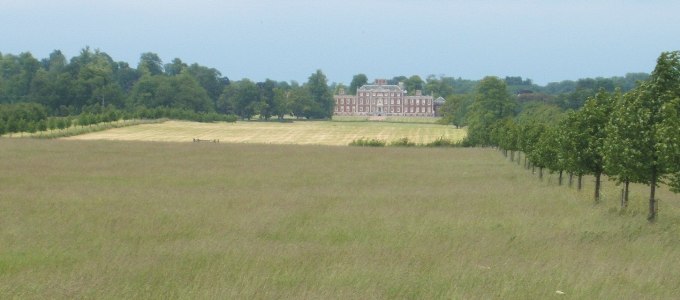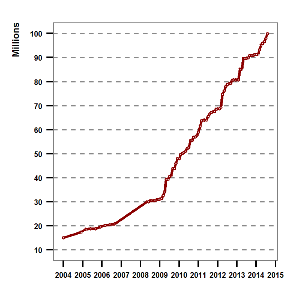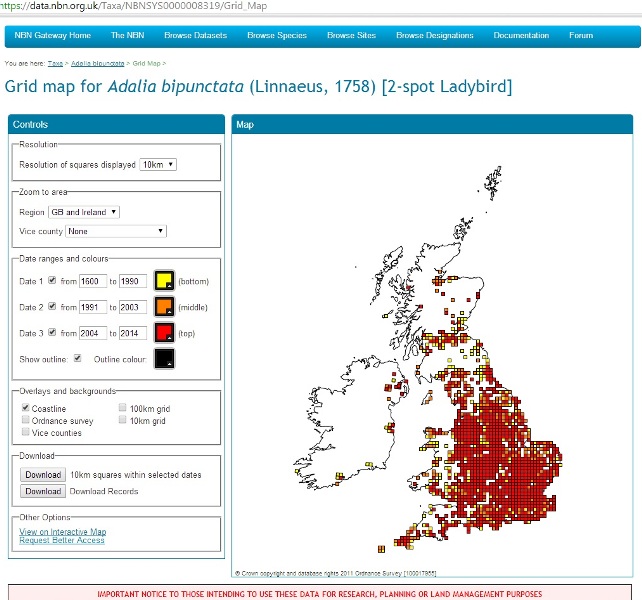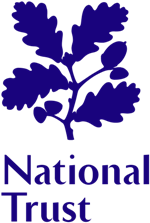100 million records help create one of the largest wildlife databases in the world
Image of 2-spot ladybird courtesy of North East Wildlife
The NBN Gateway, which launched just a decade ago has reached its 100 millionth record, making it one of the biggest wildlife databases in the world.
This online resource has grown rapidly, from its prototype beginnings when 100,000 records were available in the late 1990s, to 20 million records in 2006, 50 million in 2010 and now to a staggering 100 million species records from across the United Kingdom. The NBN would like to thank all the data providers that have made this fantastic milestone possible.
The 100 millionth species record is Adalia bipunctata (2-spot ladybird) and was part of a dataset of more than 17,000 records from the National Trust’s Wimpole Estate in Cambridgeshire. The species was recorded by Peter Kirby.
This classic National Trust estate, with its mansion, landscape park, woodlands and farmland, is diverse in wildlife, with over 3,641 different species recorded there.
There are some notable rarities at Wimpole such as the golden hoverfly and the rusty-red click beetle, which are both listed as Endangered and populations of barbastelle bat, brown long-eared bat, water vole and great crested newt which are priority species for conservation in the UK. The estate has breeding barn owl, tawny owl, buzzard, marsh harrier and sparrowhawk, and the presence of these top predators indicate healthy food webs which starts with the Trust’s large organic farm.
Stuart Warrington, a wildlife advisor for the National Trust, says: “Wimpole is an oasis for wildlife and there are super habitats for both common and scarce species across the estate.
“I like the way the NBN Gateway makes all of our data available to anyone who is interested, so our volunteer surveyors can see their observations feeding into the UK-wide network of records.”
Simon Damant, Forester at the Wimpole Estate, says: “The hundreds of veteran trees in the park and woods are especially important as they support so many rare insects and fungi. Two of my favourites are the rare Devil's Bolete toadstool which can be found under old oak trees and the Golden Hoverfly which comes to ivy flowers in the autumn.”

The data on the NBN Gateway comes from the dedication and commitment of amateur and professional experts across the UK, who painstakingly record the species they see. The NBN Gateway allows anyone who is interested to look and investigate the distribution of these species on maps and to download information.

Users range from naturalists interested in the distribution of particular species, government agencies monitoring changes in populations of threatened or non-native species, researchers using data for analysis and the general public interested in the wildlife in their local area.“This biological data is one of the most important resources for anyone learning about, caring for, or managing the UK environment,” says John Sawyer, Chief Executive of the National Biodiversity Network.
“Without the dedication of volunteers recording what they see we would know very little about the status of our wildlife, what is happening over time, whether a changing climate is having an effect and whether our conservation and restoration is making a difference.”
Facts about the 100 million records
• There are c. 44,000 species with records on the NBN Gateway.
• The most observations are for the butterfly Meadow Brown (Maniola jurtina) with 839,866 records.
• One of the oldest records on the NBN Gateway is of Red Deer (Cervus elaphus) in 1512 from Cumbria Biodiversity Data Centre vertebrate species observations for Cumbria for the period 1512 to 2011
• Adalia bipunctata (2-spot ladybird) has been adversely affected by the arrival of Harmonia axyridis, the invasive Harlequin ladybird and has declined by around 40%, since its arrival in Britain in 2004. For further information on the UK ladybirds please see here
You can see the distribution of the 2-spot ladybird on the NBN Gateway grid map and enter different dates to see how its range has changed since the arrival of the Harlequin ladybird.

Want to get involved?
Why not join the growing number of data providers who help make the NBN and the NBN Gateway possible. If you would like to find out more about the NBN, the NBN Gateway and how you can provide data please get in touch.

